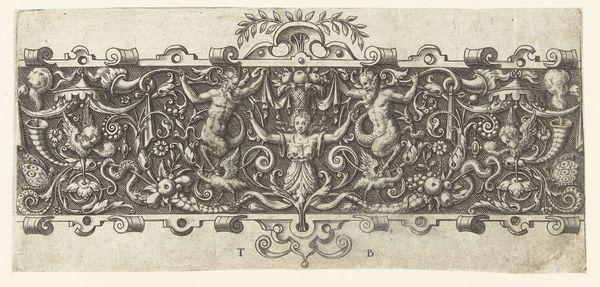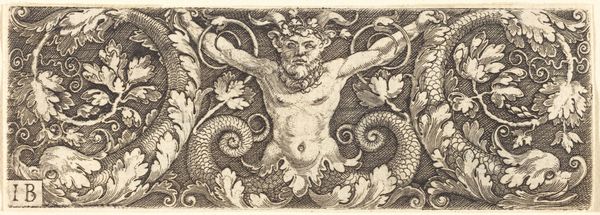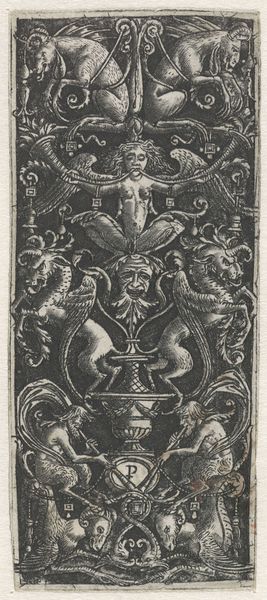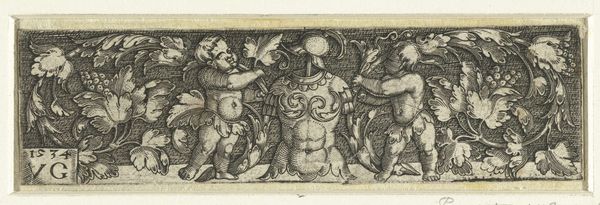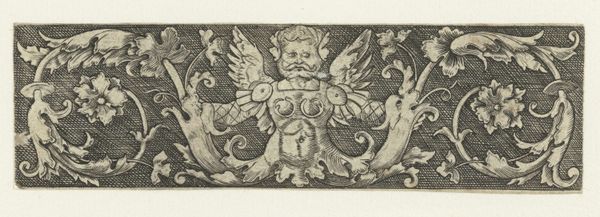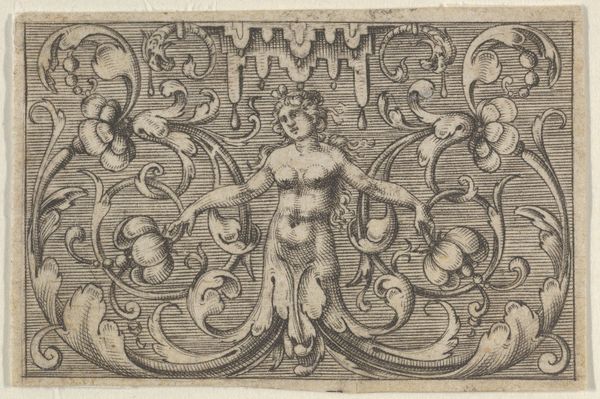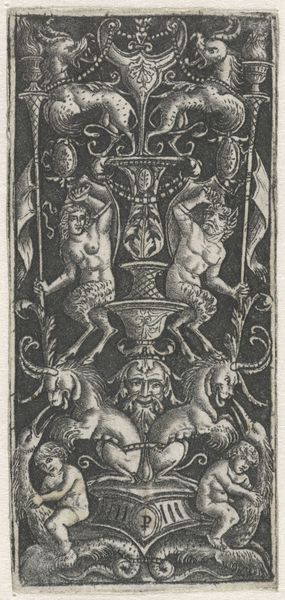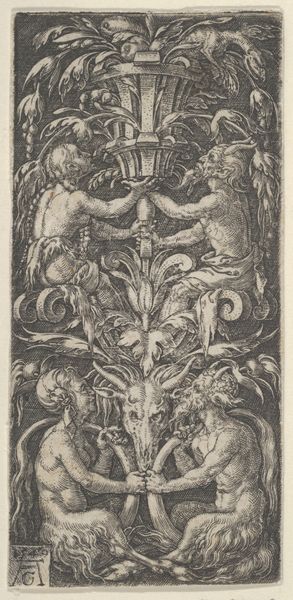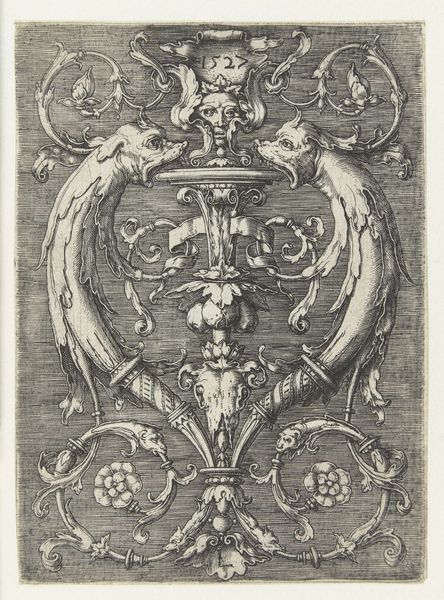
Horizontal Panel with Armor at Center, Flanked by Two Genii 1544
0:00
0:00
drawing, print, engraving
#
drawing
# print
#
figuration
#
11_renaissance
#
line
#
history-painting
#
armor
#
northern-renaissance
#
engraving
Dimensions: Sheet: 2 1/4 x 2 1/8 in. (5.8 x 5.4 cm)
Copyright: Public Domain
Editor: This is Sebald Beham's "Horizontal Panel with Armor at Center, Flanked by Two Genii," from 1544. It's a small engraving, currently housed at The Met. The playful cherubs around the cold, central armor create such a strange tension for me. How do you interpret this work? Curator: That tension is exactly where its power lies. Look at the date, 1544. Beham was working in a time of religious and political upheaval during the Reformation. Armor, traditionally a symbol of power and protection, is presented here as static, even vulnerable, surrounded by putti—figures often associated with innocence and perhaps, the future. What if the armor represents the old order, while the cherubs embody the burgeoning social changes of the era? Editor: So the cherubs aren’t just decorative? Curator: I think Beham is using them to pose a question: what does defense even mean anymore? Is it physical strength and tradition, or something else entirely? The Reformation was questioning established institutions. By placing armor, the epitome of those institutions, within this delicate, almost frivolous, scene, Beham seems to be asking whether those power structures can truly protect anymore. Notice that it's also headless. Editor: Wow, that adds a whole other layer. The absent head... the leadership is gone. Curator: Precisely! And considering Beham’s own struggles with religious authorities – he was exiled for his beliefs – we can view this panel as a subtle, yet potent, critique of the established order. How does seeing the headless armor through *that* lens change your initial reading of the tension? Editor: It shifts from strange to actively subversive. Now it makes me wonder what Beham envisioned taking its place. This has been a thought-provoking exploration. Curator: Absolutely. This piece prompts us to question power structures and contemplate the complexities of historical context through the lens of art.
Comments
No comments
Be the first to comment and join the conversation on the ultimate creative platform.

